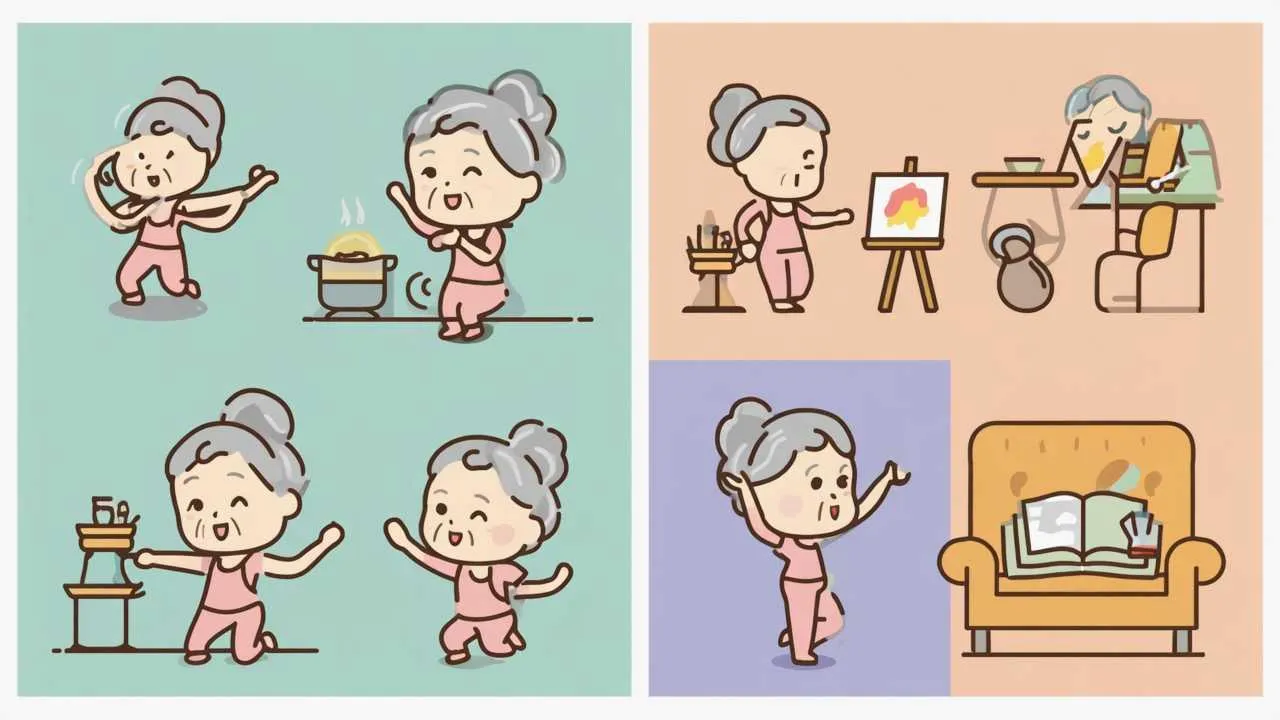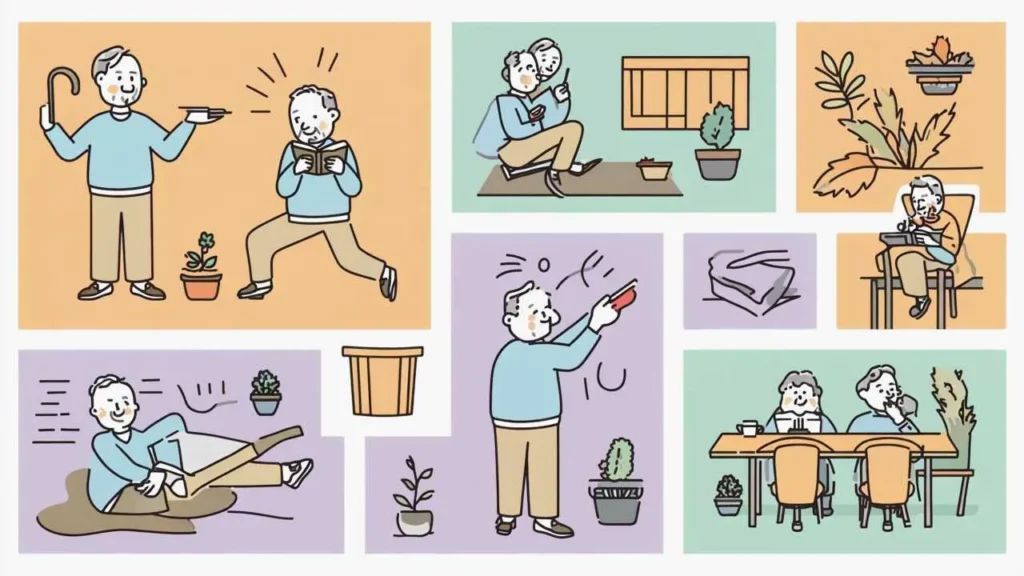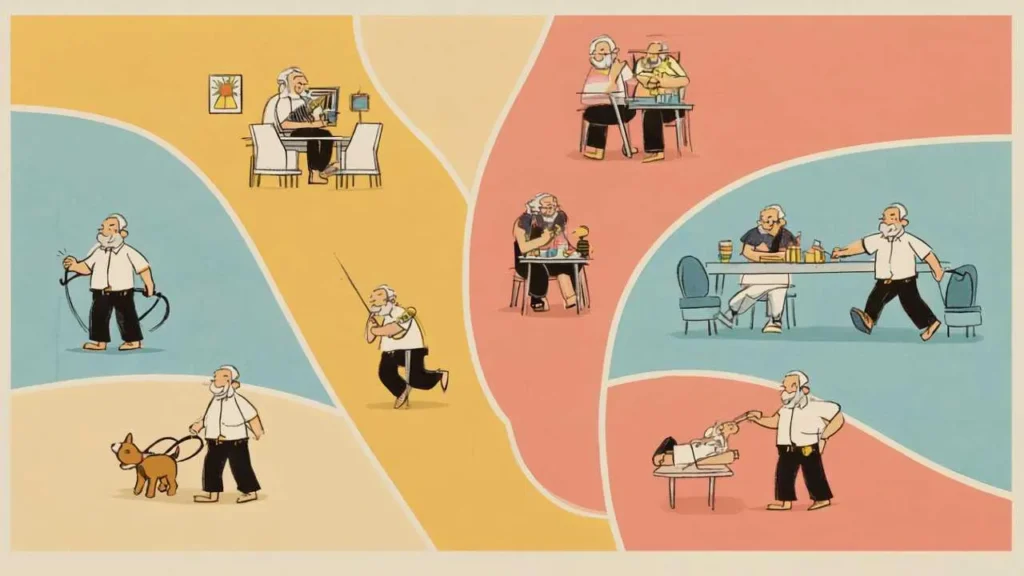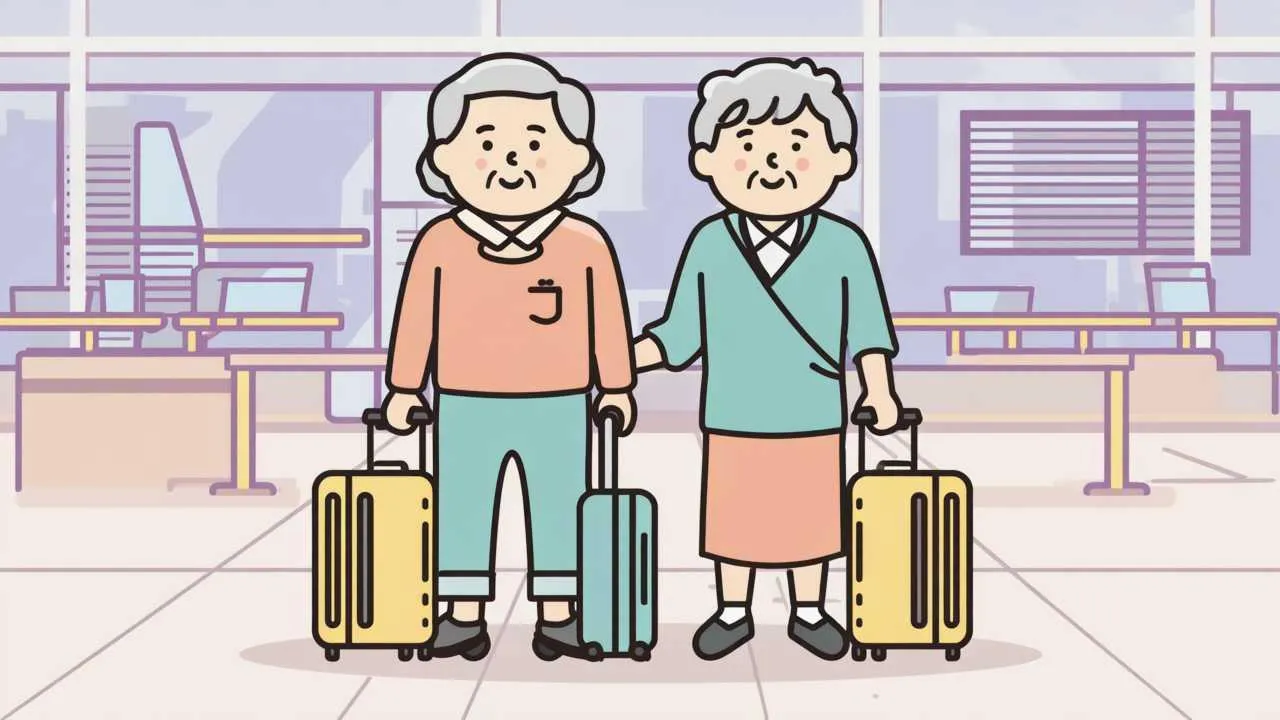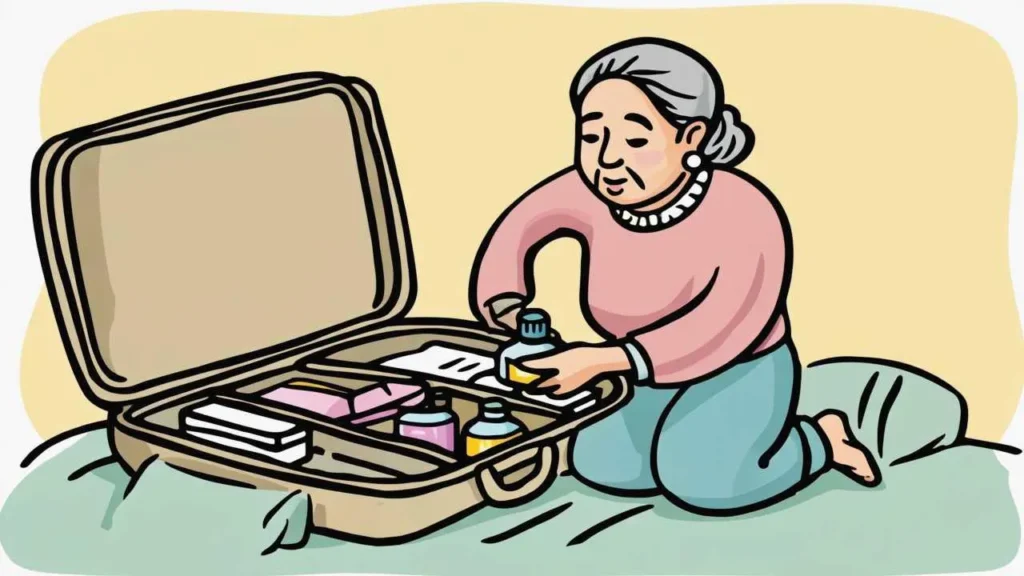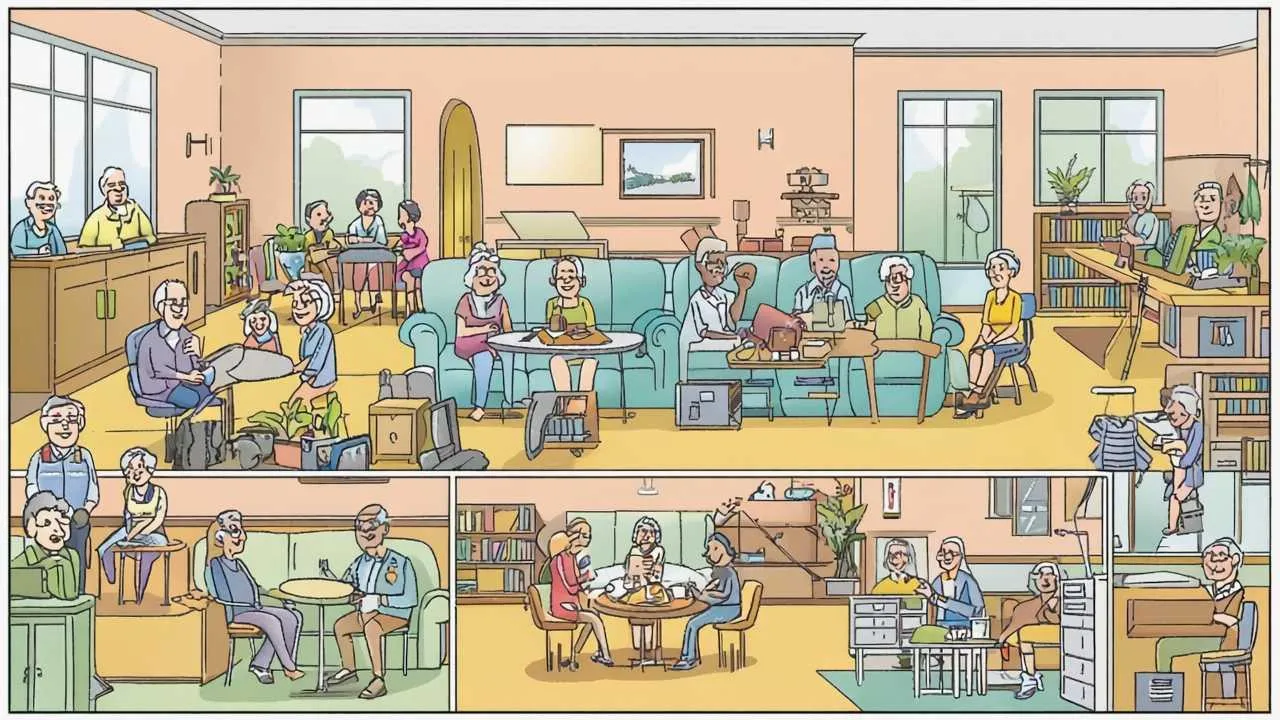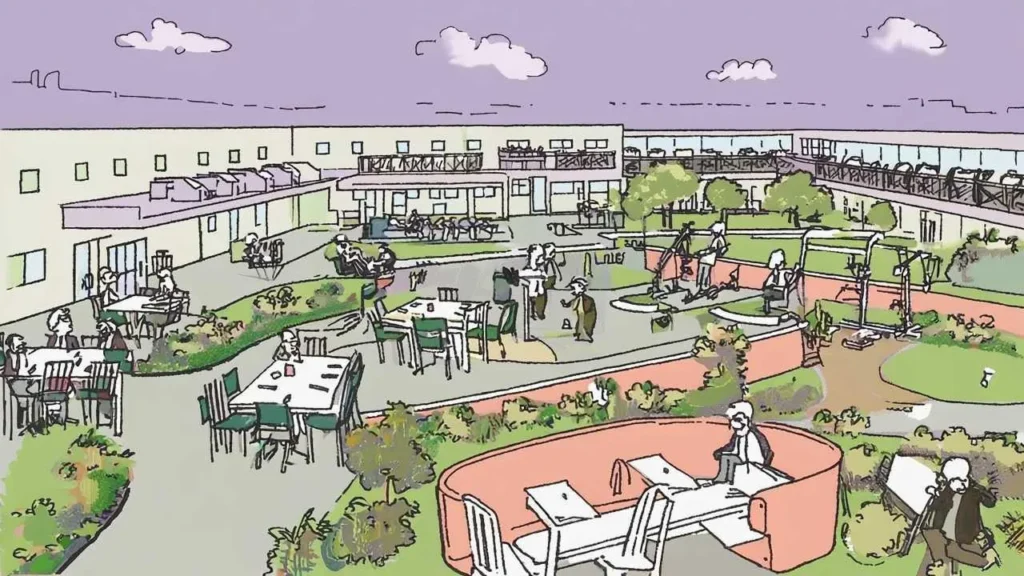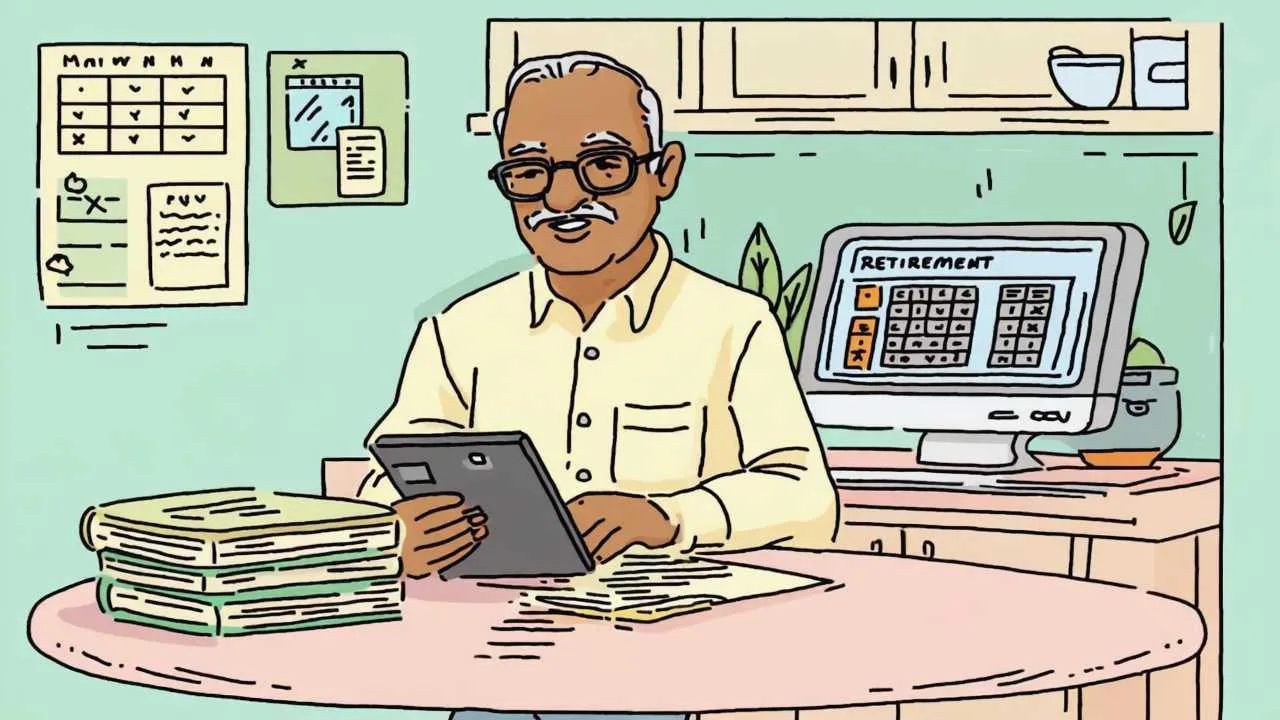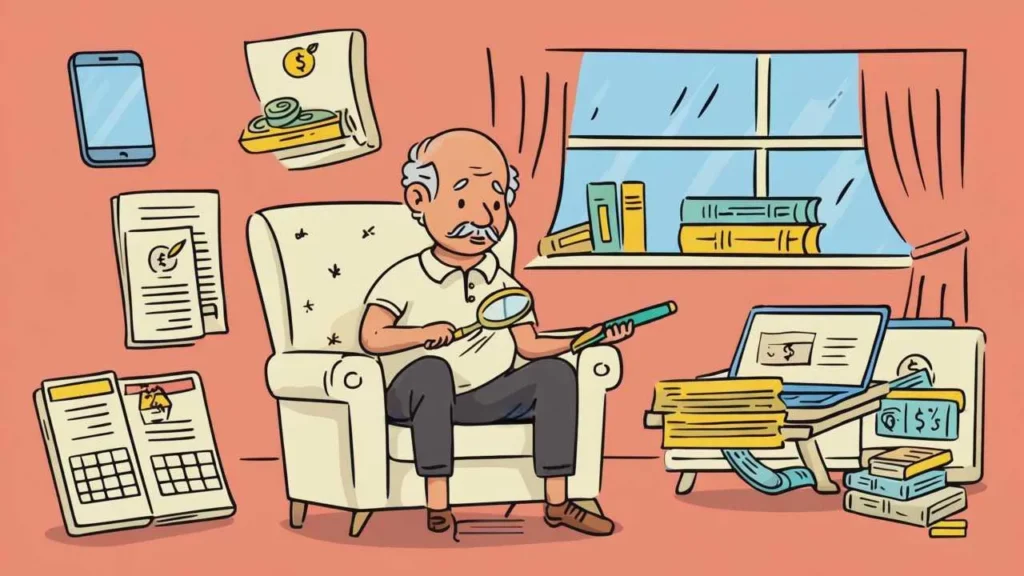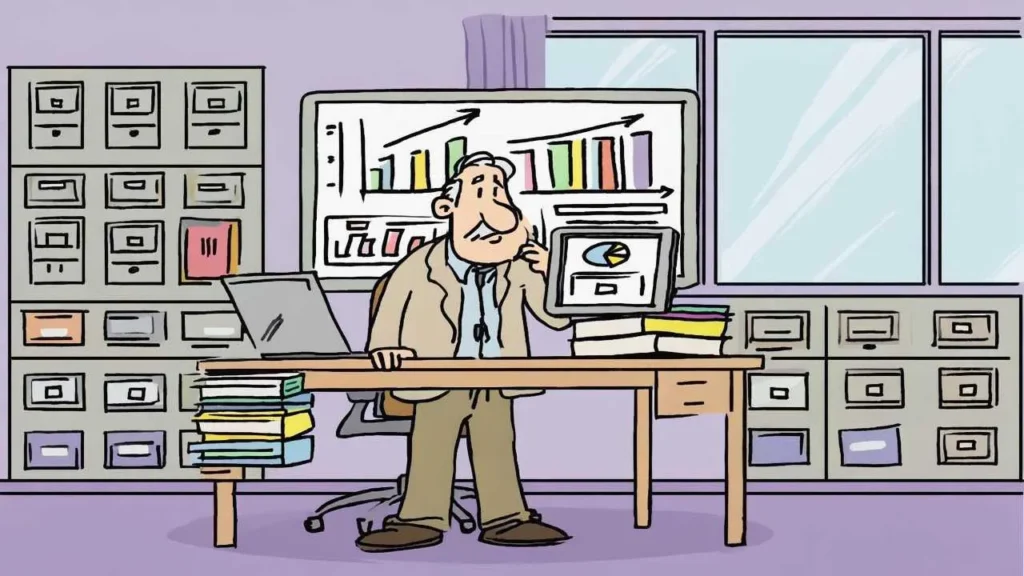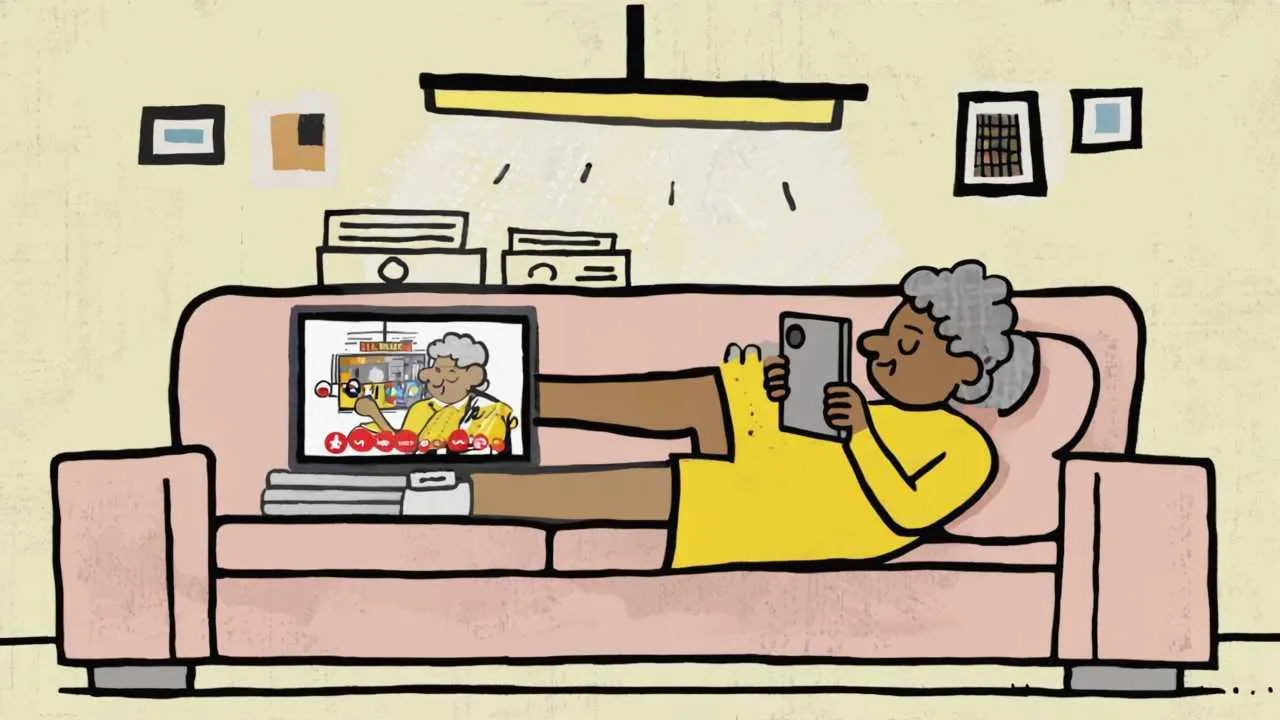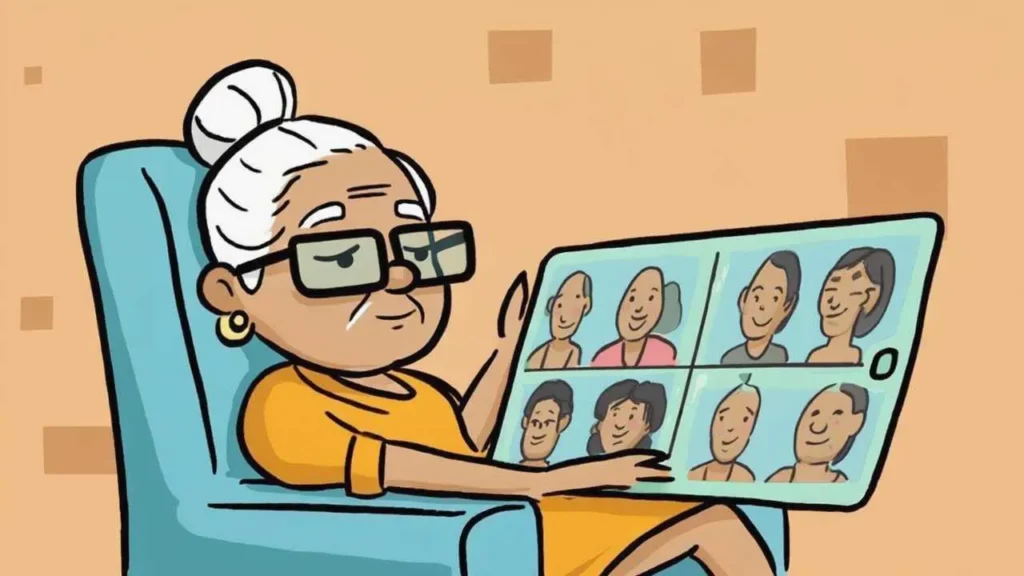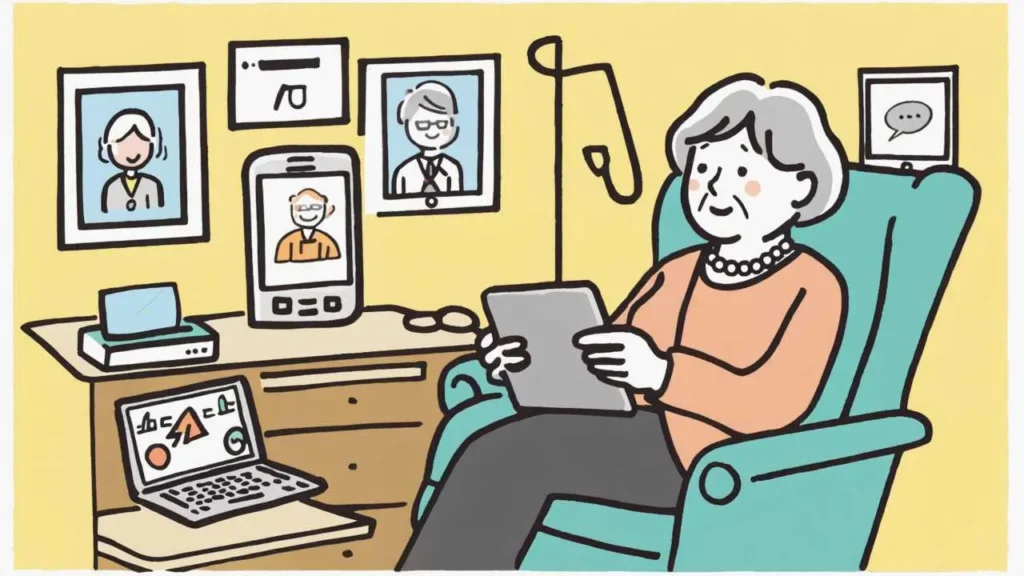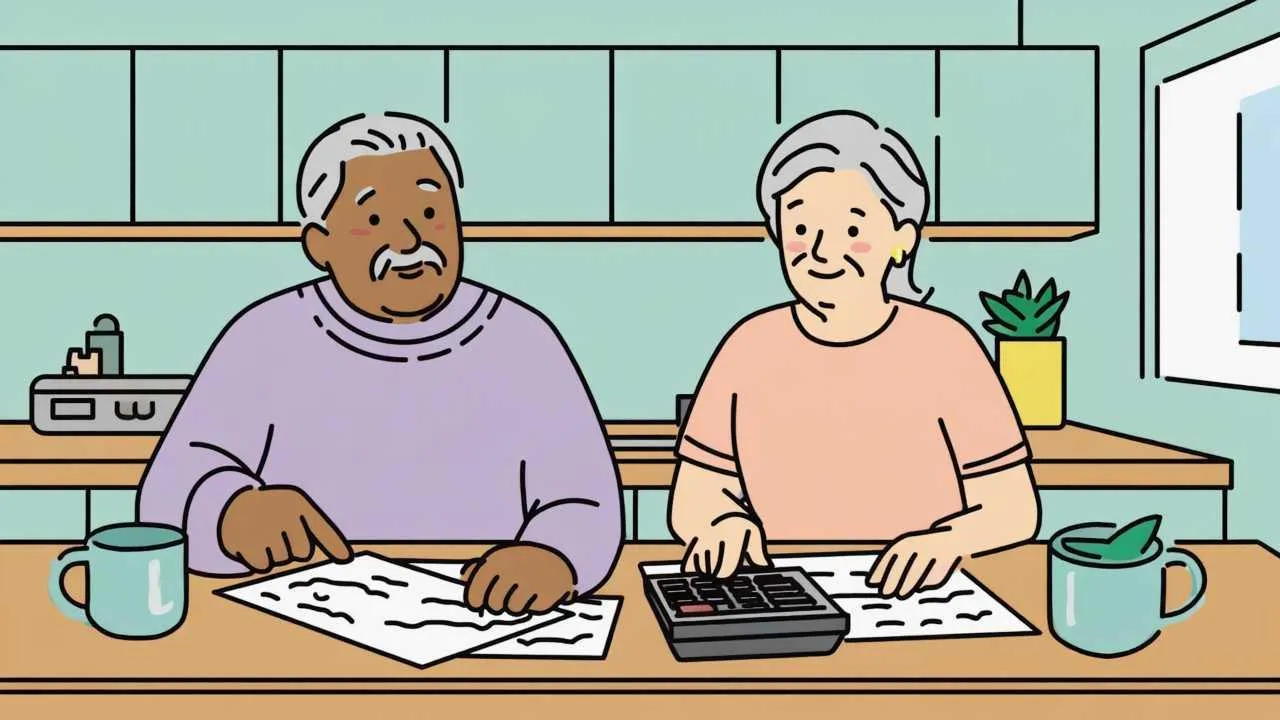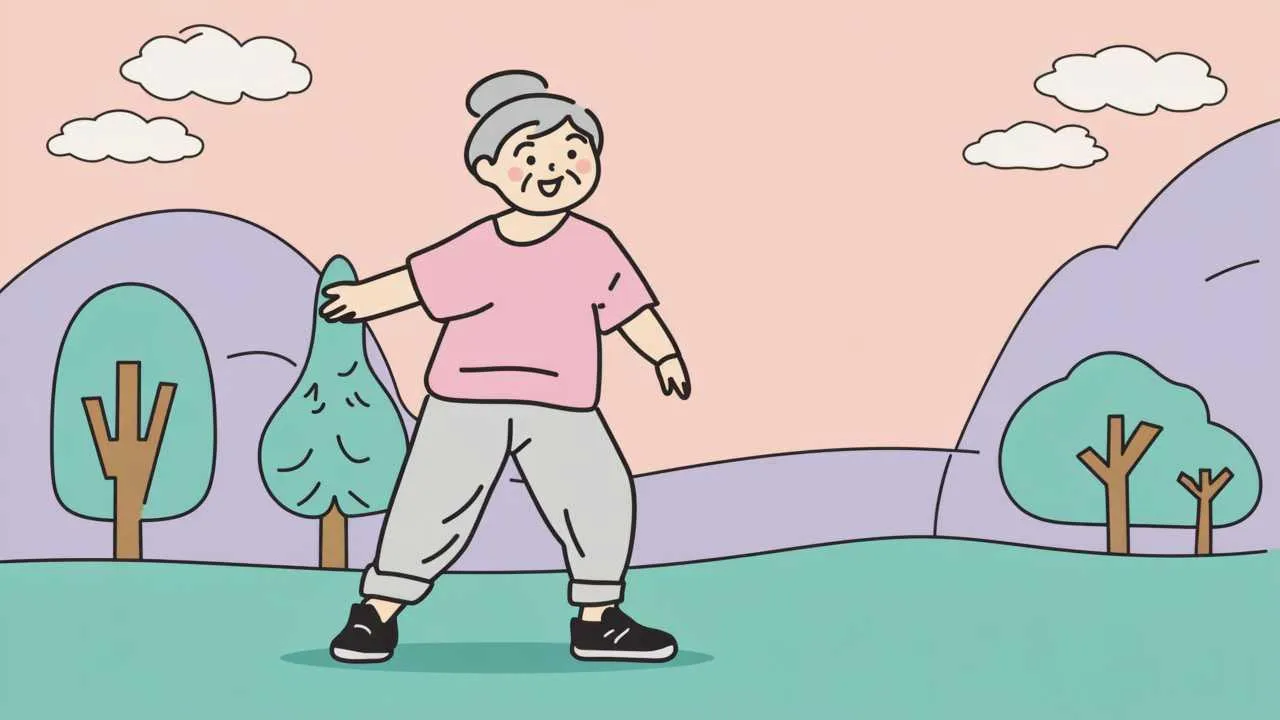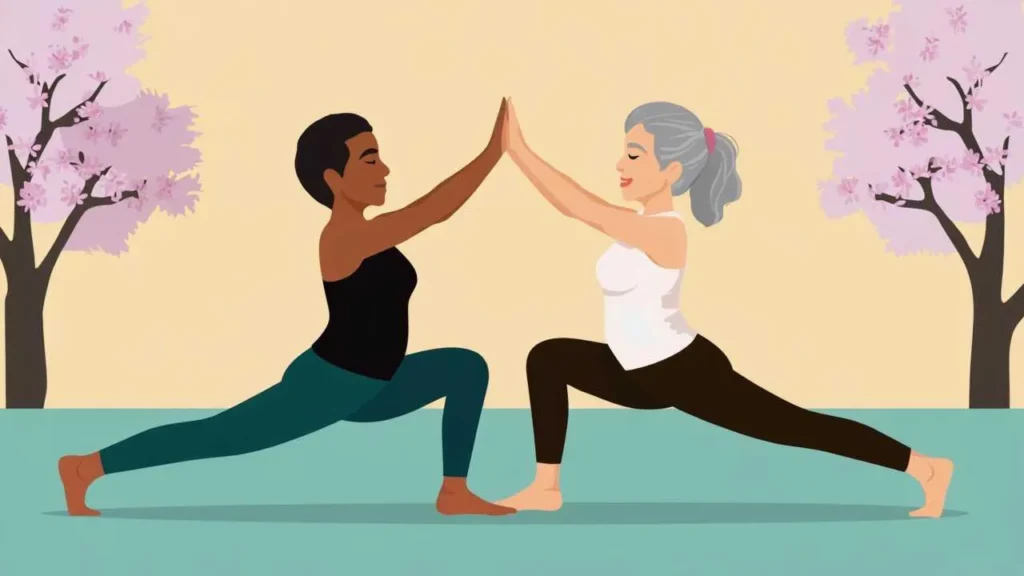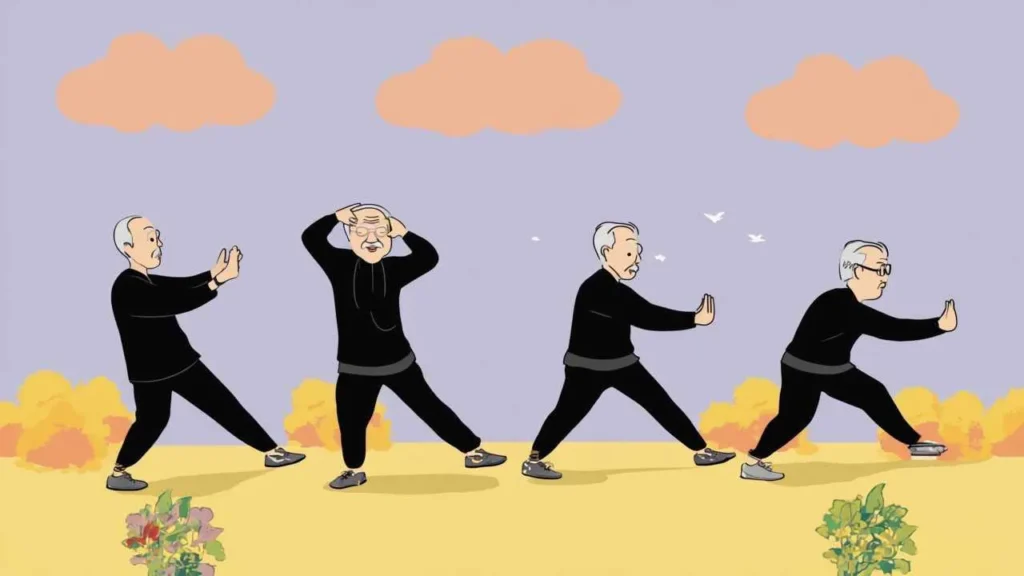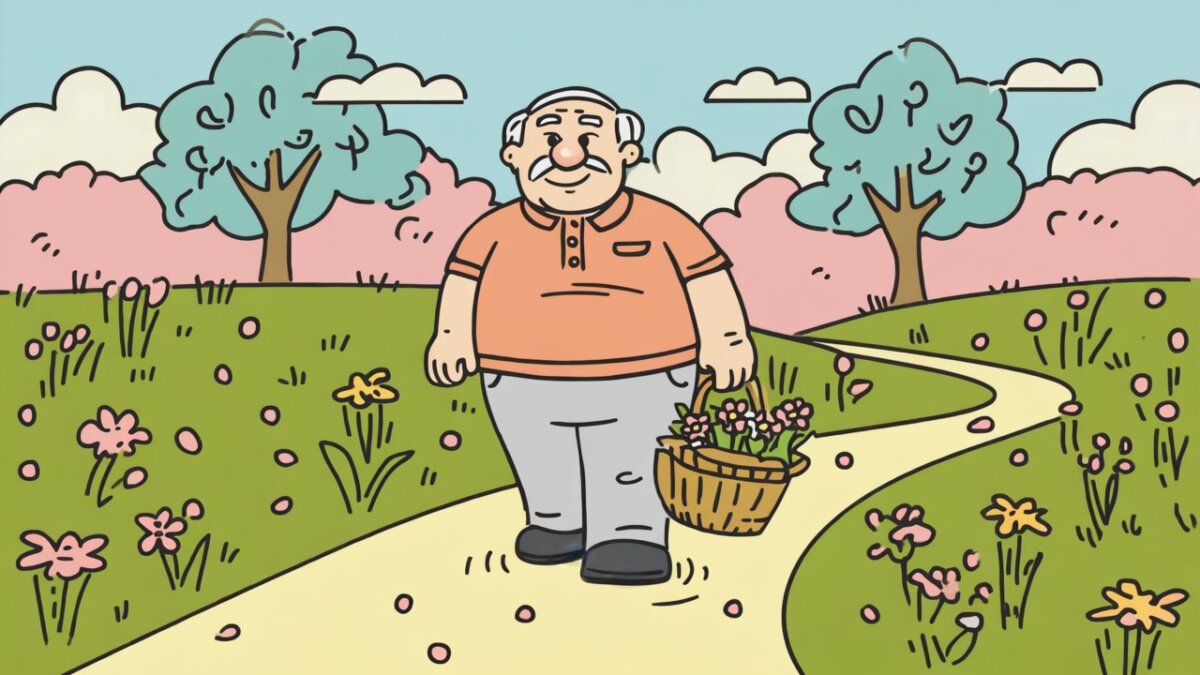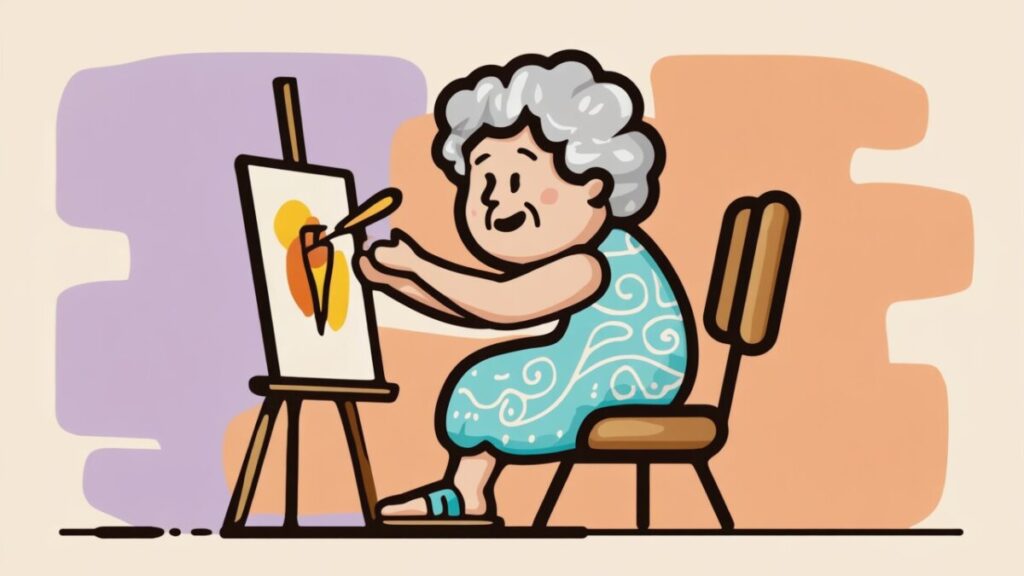Why Spain is Ideal for Senior Travelers
Spain consistently ranks among the world’s top destinations for retirees and senior travelers, and the reasons extend far beyond sunny weather and paella. The country’s healthcare system ranks 7th globally according to the World Health Organization, with modern hospitals, English-speaking doctors in major cities, and medical costs 40-60% lower than the United States. A specialist consultation costs €80-120 ($88-132) compared to $200-400 in the U.S., and prescription medications are often available at one-third of American prices.
The climate offers year-round appeal with significant regional variation. The Mediterranean coast maintains mild winters with temperatures rarely dropping below 55°F (13°C), while summers stay comfortably warm at 75-85°F (24-29°C) thanks to sea breezes. This climate benefits seniors with arthritis, joint pain, or respiratory conditions who find cold weather challenging. The southern region of Andalusia enjoys over 300 days of sunshine annually, creating ideal conditions for outdoor exploration without extreme heat.
Spain’s cost of living provides exceptional value for retirees on fixed incomes. A high-quality three-course meal with wine costs €12-20 ($13-22) per person at local restaurants, while museum admissions rarely exceed €12 ($13) and often offer 50% senior discounts for those over 65. Public transportation is efficient and affordable—a 10-ride metro ticket in Barcelona costs just €11.35 ($12.50), with additional senior discounts available for residents and EU citizens.
The country’s compact geography and excellent transportation infrastructure allow seniors to experience diverse regions without exhausting travel. High-speed AVE trains connect Madrid to Barcelona in 2 hours 45 minutes, Madrid to Seville in 2 hours 30 minutes, and Madrid to Valencia in 1 hour 40 minutes—all with comfortable seating, spacious legroom, and onboard café service. This connectivity enables comfortable base-and-excursion travel strategies that minimize hotel changes and packing stress.
Spanish culture demonstrates profound respect for older adults, with seniors receiving priority seating on public transportation, preferential treatment in queues, and genuine warmth from locals who appreciate older visitors’ interest in their culture. The leisurely Spanish lifestyle—late dining hours, afternoon siestas, and extended meal times—encourages the relaxed pace many seniors prefer while traveling.
English proficiency has increased dramatically in recent years, particularly among younger Spaniards and hospitality workers in tourist areas. While learning basic Spanish phrases enhances your experience and shows cultural respect, you’ll rarely struggle to find English speakers in Barcelona, Madrid, Seville, Valencia, and coastal resort areas. Even smaller cities have English-speaking tourist information offices and hotel staff.
Best Spanish Regions for Senior Travelers
Spain’s regional diversity means selecting destinations that match your interests, mobility level, and travel style significantly impacts your experience. Each region offers distinct advantages for senior travelers seeking specific experiences.
Barcelona and Catalonia: Art, Architecture, and Mediterranean Charm
Barcelona combines world-class art museums, Gaudí’s architectural masterpieces, Mediterranean beaches, and excellent accessibility infrastructure. The city’s metro system features elevators at most stations, and the flat beachfront promenade extends for miles with benches every 100 meters. Park Güell, Sagrada Família, and Casa Batlló all offer elevator access or alternative routes for those with mobility limitations, though advance reservation is essential to avoid long waits that strain standing endurance.
The Gothic Quarter’s narrow medieval streets challenge those with walking difficulties, but nearby areas like Eixample feature wide boulevards and flat terrain perfect for leisurely strolls. Barcelona’s extensive bus network supplements the metro with low-floor buses providing accessible alternatives to hilly neighborhoods. The city offers exceptional tapas culture where small plates allow sampling diverse dishes without overwhelming portions.
Madrid: Museums, Parks, and Cultural Heart
Spain’s capital provides world-renowned museums within walking distance—the Prado, Reina Sofía, and Thyssen-Bornemisza form the “Golden Triangle of Art” along Paseo del Prado. All three museums offer wheelchairs, elevators, and extensive seating throughout galleries. Senior discounts of 50% apply to those over 65 at most museums, with some offering free admission for seniors on specific days.
Retiro Park provides 350 acres of peaceful gardens, shaded pathways, and rowboat rentals on the central lake—all accessible via paved paths suitable for wheelchairs and walkers. Madrid’s metro is one of Europe’s most extensive, with elevator access at newer stations and clear signage in Spanish and English. The city’s flat central districts facilitate comfortable walking, though summer temperatures can exceed 95°F (35°C), making spring and fall ideal visiting seasons.
Andalusia: Historic Cities and Authentic Spanish Culture
Southern Spain’s Andalusia region encompasses Seville, Granada, Córdoba, and the Costa del Sol, offering the most quintessentially “Spanish” experiences—flamenco, bullfighting heritage, Moorish architecture, and whitewashed villages. Seville’s flat terrain and compact historic center enable exploration on foot or via charming horse-drawn carriages for those preferring to sit. The Real Alcázar palace features ramps and accessible routes through most gardens and historic rooms.
Granada’s Alhambra presents more significant accessibility challenges with steep hills and cobblestones, but shuttle buses transport visitors from parking areas to the main entrance, and wheelchair-accessible routes cover major palace sections. Booking morning tickets in spring or fall avoids afternoon heat and crowds. Córdoba’s Mezquita (Mosque-Cathedral) provides level access and stunning architecture without the physical demands of Granada’s hilltop fortress.
The Costa del Sol offers purpose-built resort towns like Marbella, Málaga, and Nerja with flat promenades, accessible beaches featuring wooden walkways to the water, and high concentrations of English speakers due to large British expatriate communities. Healthcare facilities in coastal areas cater specifically to international residents and visitors with English-speaking staff and modern equipment.
Valencia: Beaches, Science, and Paella
Valencia combines Mediterranean beaches, cutting-edge architecture in the City of Arts and Sciences, and the birthplace of authentic paella. The city’s Turia Gardens—a 9-kilometer park built in a former riverbed—provides flat, shaded pathways perfect for morning walks or bike rides (rental bikes with baskets available). Valencia’s compact size allows exploration of major attractions via short metro rides or pleasant walks.
The city’s beaches feature accessible changing facilities, beach wheelchairs available free from lifeguard stations, and numerous beachfront restaurants with level access. Valencia’s Central Market offers a sensory feast of local produce, seafood, and Spanish specialties in a beautiful modernist building with level access throughout. The city maintains moderate temperatures year-round, rarely experiencing the extreme heat of inland cities.

| Region/City | Best For | Accessibility | Avg Daily Cost | English Level |
|---|---|---|---|---|
| Barcelona | Art, Architecture, Beaches | High (4.5/5) | $90-140 | Very High |
| Madrid | Museums, Parks, Culture | Very High (5/5) | $85-130 | High |
| Seville | Flamenco, History, Food | High (4/5) | $75-115 | Medium |
| Granada | Alhambra, Moorish Culture | Medium (3/5) | $70-110 | Medium |
| Valencia | Beaches, Modern Architecture | High (4/5) | $80-120 | High |
| Costa del Sol | Beach Relaxation, Golf | Very High (5/5) | $85-135 | Very High |
Best Times to Visit Spain for Seniors
Timing your Spanish visit significantly impacts comfort, costs, and crowd levels. Understanding seasonal patterns helps seniors maximize enjoyment while minimizing heat, crowds, and expenses.
Spring (April-June): Optimal Conditions
Spring offers ideal weather throughout Spain with temperatures ranging from 60-75°F (16-24°C) in most regions. April brings Easter celebrations with spectacular processions in Seville, Málaga, and throughout Andalusia—though hotels book months ahead and prices increase 30-50% during Holy Week. May and early June provide perfect conditions with blooming flowers, comfortable walking weather, and moderate tourist numbers.
Coastal areas become pleasant for beach visits by May, with water temperatures reaching 65-70°F (18-21°C)—refreshing but comfortable for swimming. Inland cities like Madrid and Seville enjoy warm days and cool evenings perfect for outdoor dining. Spring produce fills markets with strawberries, cherries, artichokes, and fresh peas featured in seasonal dishes.
Book accommodations 6-8 weeks ahead for spring travel to secure good rates and preferred locations. Expect daily costs to run 15-25% higher than winter but 20-30% lower than summer peak season.
Fall (September-October): Second Best Season
September through mid-October rivals spring for ideal conditions. The Mediterranean remains warm (70-75°F/21-24°C water temperature) while crowds diminish significantly after school resumes in early September. Cultural events increase—Barcelona’s La Mercè festival in late September features free concerts, street performances, and fireworks, while wine harvest festivals occur throughout La Rioja and Catalonia.
October brings comfortable temperatures (65-75°F/18-24°C) ideal for city exploration and museum visits without summer’s heat. Fall produce includes figs, pomegranates, wild mushrooms, and chestnuts featured in seasonal menus. Hotel rates drop 25-35% compared to summer peak, offering excellent value.
Book 4-6 weeks ahead for fall travel, as September remains moderately popular with European travelers. Consider late October through early November for the lowest rates and smallest crowds, though some coastal businesses close for the season.
Winter (November-February): Budget-Friendly Mild Weather
Winter in Spain varies dramatically by region. Southern coastal areas maintain mild temperatures (55-65°F/13-18°C) with occasional rain, while inland cities experience cooler weather (40-55°F/4-13°C) and rare snow. The Canary Islands off Africa’s coast offer spring-like conditions (65-75°F/18-24°C) year-round, making them popular winter escape destinations.
Winter provides the lowest hotel rates—50-60% below summer prices in many areas—and minimal crowds at major attractions. Museums, restaurants, and cultural sites maintain full operations in cities, though some coastal beach towns close many businesses November through March. Christmas markets and Three Kings Day celebrations (January 6) add festive cultural experiences.
Pack layers for winter travel, as Spanish buildings often lack central heating. Coastal areas rarely require heavy winter coats, but inland cities can feel chilly, particularly inside historic stone buildings. Winter offers excellent value for budget-conscious seniors willing to accept cooler temperatures and occasional rain.
Summer (July-August): Hot and Crowded
Summer brings intense heat to most of Spain, with inland cities regularly exceeding 95°F (35°C) and sometimes reaching 104°F (40°C). Coastal areas remain more moderate (80-90°F/27-32°C) with sea breezes, but crowds peak as Europeans take August vacations. Beaches become packed, hotel rates reach annual highs, and many locals flee cities for coastal areas.
If you must visit in summer, focus on coastal areas, northern regions like Galicia and the Basque Country (which maintain moderate temperatures), or mountain areas. Adjust your schedule to Spanish summer patterns—sightsee early morning (8-11 AM), rest during afternoon heat (2-6 PM), then explore again in the evening when temperatures drop and streets come alive.
Book summer accommodations 3-4 months ahead, especially for August when availability tightens significantly. Expect daily costs 40-60% higher than winter and 20-30% higher than spring/fall. Summer suits seniors who handle heat well and prefer vibrant, energetic atmospheres.
Getting Around Spain: Transportation Tips
Spain’s extensive, modern transportation network makes exploring the country comfortable and straightforward for seniors. Understanding your options helps you choose the most suitable methods for your needs and budget.
High-Speed Trains (AVE and Avant): Premium Comfort
Spain’s AVE high-speed rail network is among Europe’s best, connecting major cities at speeds up to 310 km/h (193 mph) with exceptional comfort. Trains feature spacious reclining seats, large windows, onboard café cars, power outlets, and accessible bathrooms with wheelchair access. Seats face forward in pairs or groups of four, allowing couples or small groups to sit together comfortably.
Seniors over 60 qualify for Tarjeta Dorada (Gold Card) offering 25-40% discounts on most trains, though the card costs €6 annually and requires Spanish residency or extended stays. Non-residents can access advance-purchase discounts (Promo and Promo+) offering 60-70% savings when booking 15+ days ahead through the Renfe website or app. Book popular routes (Madrid-Barcelona, Madrid-Seville) well in advance for best prices and seat selection.
Train stations in major cities offer elevators, escalators, and porter services for luggage assistance. Madrid’s Atocha and Barcelona’s Sants stations feature extensive amenities including restaurants, shops, and comfortable waiting areas with seating. Arrive 30 minutes before departure for stress-free boarding—Spanish trains depart precisely on schedule.
Metro Systems: Efficient City Navigation
Madrid, Barcelona, Valencia, Seville, and Bilbao operate modern metro systems with extensive coverage and affordable fares. Barcelona’s metro features elevator access at most newer stations, though some older stations have only escalators or stairs. Purchase a T-10 multi-ride ticket (€11.35 for 10 rides) for significant savings over single tickets (€2.40 each).
Madrid’s metro is one of the world’s largest and most accessible, with elevator access at the majority of stations and clear signage in Spanish and English. The system connects the airport to downtown in 20 minutes for just €5. Seniors over 65 can apply for reduced-fare cards, though processing requires Spanish residency documentation.
Metro systems operate 6 AM to midnight on weekdays, with extended hours (until 2 AM) on Fridays, Saturdays, and holidays. Avoid rush hours (8-9:30 AM and 6-8 PM) when trains become crowded and finding seats proves difficult. Mid-morning and early afternoon offer the most comfortable metro travel experiences.
Buses: Flexible and Accessible
City buses supplement metro systems with extensive coverage and low-floor buses facilitating easy boarding. Most buses feature dedicated senior seating near the front and drivers who wait for passengers to sit before departing. Bus routes often provide more direct service to specific attractions than metro transfers.
Intercity buses operated by companies like ALSA connect cities not served by trains, often at lower prices than rail travel. Modern intercity buses feature reclining seats, air conditioning, onboard bathrooms, and luggage storage. The 5-hour Barcelona to Valencia bus costs €20-30 compared to €40-60 by train, though trains offer superior comfort and shorter travel times (3 hours).
Taxis and Ride-Sharing: Door-to-Door Convenience
Spanish taxis are affordable and ubiquitous in cities. Rates are regulated with meters starting at €2.50-3.00 and increasing approximately €1.20 per kilometer. A typical 15-minute ride costs €10-15. Official taxis are white with colored stripes (green in Barcelona, red in Madrid), and drivers appreciate 10% tips for good service.
Uber and Cabify operate in major Spanish cities, offering app-based convenience and slightly lower prices than traditional taxis. The apps eliminate language barriers for communicating destinations and show estimated fares before booking. Both services allow saving favorite locations like your hotel for easy return navigation after day trips.
For longer journeys or day trips, consider hiring private drivers through hotels or tour companies. Full-day (8-hour) private drivers cost €180-250 including fuel, offering flexibility to customize itineraries, take rest breaks as needed, and receive local recommendations from knowledgeable drivers who often become informal guides.
Walking: The Spanish Way
Spanish cities are designed for pedestrians, with wide sidewalks, frequent pedestrian zones, and benches for resting. However, be prepared for later dining hours (lunch 2-4 PM, dinner 9-11 PM) which may require adjusting your walking schedule. Comfortable, well-broken-in walking shoes with good arch support are essential—plan for 3-5 miles of daily walking when exploring cities actively.
Many cities offer free walking tours (tip-based) that provide excellent orientation while allowing you to gauge your walking capacity. Tours typically last 2-3 hours and cover 2-3 miles at a leisurely pace with frequent stops for explanations. This helps you identify areas worth returning to independently.
| Transportation | Cost Range | Best For | Comfort Level | Senior Discount |
|---|---|---|---|---|
| AVE High-Speed Train | €40-120 | City-to-city travel | Excellent | 25-40% (Gold Card) |
| Metro (10-ride ticket) | €11-15 | City exploration | Good | Varies by city |
| City Bus | €1.50-2.50 | Local routes | Good | 50% (some cities) |
| Taxi (15 min) | €10-15 | Point-to-point | Excellent | None |
| Uber/Cabify | €8-13 | City travel | Excellent | None |
| Private Driver (8hr) | €180-250 | Day trips, tours | Excellent | Negotiable |
Spanish Cuisine and Dining for Seniors
Spanish cuisine offers heart-healthy Mediterranean diet staples—olive oil, fresh vegetables, seafood, legumes, and moderate wine consumption—that align well with senior nutritional needs. Understanding Spanish dining culture and meal times helps you enjoy authentic experiences while accommodating dietary requirements.
Meal Times and Portions
Spanish meal times differ significantly from American schedules. Breakfast (desayuno) is typically light—coffee with a pastry or toast—served 8-10 AM. Lunch (comida) is the main meal, served 2-4 PM with multiple courses and often lasting 1-2 hours. Dinner (cena) occurs late at 9-11 PM and tends to be lighter than lunch, though tourist areas accommodate earlier dining from 7 PM onward.
Adjusting to Spanish schedules prevents hunger between meals and allows you to experience authentic local culture. Many seniors adopt a strategy of substantial late breakfast (11 AM), traditional Spanish lunch (2:30 PM), light afternoon snack (merienda around 6 PM), then late light dinner or simply evening tapas. This pattern aligns with the Mediterranean lifestyle linked to longevity and health benefits.
Portions at traditional restaurants are generous. Don’t hesitate to share main courses, request half portions (media ración), or ask for to-go containers—increasingly common as food waste awareness grows. The Menu del Día (menu of the day) offered at lunch typically includes three courses, bread, and wine or soft drink for €12-18, providing excellent value and authentic local cuisine.
Tapas Culture: Perfect for Seniors
Tapas—small plates meant for sharing—allow sampling diverse dishes without overwhelming portions. Traditional tapas bars serve small portions free with drinks or charge €3-8 per tapa. Order 3-4 tapas per person to create a satisfying meal while experiencing variety. Popular senior-friendly tapas include patatas bravas (fried potatoes with spicy sauce), tortilla española (Spanish omelet), gambas al ajillo (garlic shrimp), pimientos de padrón (fried green peppers), and croquetas (bechamel-filled fritters).
Tapas dining encourages leisurely socializing over several hours, with couples or groups ordering rounds of different tapas throughout the evening. This relaxed pace suits seniors who prefer unhurried meals and social dining experiences. Standing at tapas bars is common, but most establishments have seating areas—arrive early (7:30-8 PM) to secure tables before crowds arrive.
Regional Specialties Worth Trying
Each Spanish region offers distinctive dishes reflecting local ingredients and traditions. In Catalonia, try escalivada (roasted vegetables), suquet de peix (fish stew), or crema catalana (custard dessert similar to crème brûlée). Madrid is famous for cocido madrileño (chickpea stew), callos (tripe), and bocadillo de calamares (fried squid sandwich)—though calamari may be chewy for those with dental issues.
Andalusia specializes in gazpacho (cold tomato soup) perfect for hot days, pescaíto frito (fried fish), and jamón ibérico (cured ham) from acorn-fed pigs. Valencia’s signature dish, paella, should be eaten at lunch when freshly prepared—never order paella at dinner as it’s typically reheated. Authentic paella valenciana contains rabbit, chicken, and green beans, while paella de marisco features seafood.
The Basque Country offers pintxos (Basque tapas) featuring creative combinations on small bread slices, often held together with toothpicks. San Sebastián’s old town hosts world-renowned pintxos bars where you can sample Michelin-quality small bites for €3-5 each. The Basque tradition of txikiteo—going from bar to bar sampling pintxos—creates a delightful evening of culinary exploration.
Dietary Accommodations
Spanish restaurants increasingly accommodate dietary restrictions, particularly in tourist areas and larger cities. Vegetarian options have expanded dramatically, with dedicated vegetarian restaurants in Barcelona, Madrid, and Seville. Traditional cuisine is less vegetarian-friendly, but most restaurants offer ensaladas (salads), verduras a la plancha (grilled vegetables), and gazpacho as meat-free options.
Gluten-free awareness (sin gluten) is growing, with certified gluten-free restaurants and menu items more common each year. The Spanish Celiac Association (FACE) provides lists of certified restaurants and products. Many establishments offer gluten-free bread and pasta alternatives, particularly in tourist areas.
For those with food allergies, carry a card listing restrictions in Spanish—hotels provide these or print from translation websites. Use phrases like “Soy alérgico/a a…” (I’m allergic to…) or “No puedo comer…” (I cannot eat…). Waitstaff take allergies seriously and consult chefs about ingredient safety. Common allergens like shellfish, nuts, and dairy are well-understood, even in smaller establishments.
Low-sodium options can be challenging as Spanish cuisine uses salt liberally. Request dishes “con poca sal” (with little salt) when ordering, and avoid cured meats, anchovies, and dishes “al horno” (baked) which often contain significant salt. Fresh grilled fish, salads with oil and vinegar, and steamed vegetables provide lower-sodium alternatives.

Visual Art by Artani Paris
Health and Safety Essentials
Spain ranks among Europe’s safest countries with excellent healthcare and low crime rates. Understanding the healthcare system and taking basic precautions ensures a worry-free Spanish adventure.
Healthcare System and Medical Care
Spain’s healthcare system ranks 7th globally according to the WHO, with universal coverage for residents and reciprocal agreements with many countries. U.S. citizens receive emergency care regardless of insurance, though non-emergency treatment requires payment (often reimbursed by travel insurance later). Medical costs run 40-60% below U.S. prices—emergency room visits at private hospitals cost €100-150, specialist consultations €80-120, and prescription medications often cost one-third of American prices.
Major cities have English-speaking doctors and modern hospitals with the latest equipment. Barcelona’s Hospital Clínic, Madrid’s Hospital Universitario La Paz, and Málaga’s Hospital Costa del Sol offer dedicated international patient services with English-speaking staff, insurance coordination, and medical record translation. Private hospitals like Quirónsalud and HM Hospitales operate throughout Spain with excellent reputations and shorter wait times than public hospitals.
The European emergency number 112 works throughout Spain for ambulance, police, or fire services. Operators speak English and dispatch appropriate services quickly. Urban response times average under 10 minutes for emergency calls. Many tourist areas have English-speaking tourist police (Policía Nacional) specifically trained to assist visitors.
Pharmacies: Accessible Professional Care
Pharmacies (farmacias) display green crosses and operate extensive hours, with at least one 24-hour pharmacy (farmacia de guardia) in each neighborhood. Pharmacists are highly trained medical professionals who recommend over-the-counter treatments for minor ailments and can often provide prescription medications with just your U.S. prescription bottle or doctor’s letter.
Common medications available without prescription include ibuprofen (Espidifen), acetaminophen (Efferalgan), antacids (Almax), and allergy tablets (Loratadina). Spanish pharmacies stock most international medications under different brand names—knowing generic names facilitates identification. Pharmacists speak varying levels of English, with better English proficiency in tourist areas and major cities.
Travel Insurance: Essential Protection
Comprehensive travel insurance is crucial for seniors visiting Spain. Medicare provides no international coverage except in extremely limited border circumstances. Quality policies covering medical emergencies, evacuation, trip cancellation, and lost luggage cost $180-350 for two weeks depending on age, coverage limits, and pre-existing conditions.
Look for policies including medical evacuation coverage (minimum $100,000), pre-existing condition waivers if purchased within 14-21 days of initial trip deposit, and 24/7 assistance hotlines with English-speaking medical coordinators. Reputable insurers specializing in senior travel include Allianz Global Assistance, Travel Guard, Seven Corners, and IMG Global.
Safety and Crime Prevention
Spain is generally very safe, though petty theft targets tourists in crowded areas. Barcelona, Madrid, and Seville experience pickpocketing on metros, at major attractions, and in crowded markets. Use anti-theft bags with slash-resistant straps and RFID-blocking pockets, keep wallets in front pockets, avoid displaying expensive jewelry or watches, and never leave bags unattended.
Common scams include distraction thefts (someone spills on you while an accomplice steals your bag), fake petition signers who surround and confuse victims while stealing, and unlicensed taxis at airports charging inflated rates. Use only official taxis or ride-sharing apps, ignore street vendors and petition holders, and stay aware in crowded tourist areas.
Violent crime against tourists is extremely rare. Spanish people are generally helpful and kind, particularly toward older visitors. Police maintain visible presence in tourist areas and respond quickly to reports. Most seniors feel safer walking Spanish streets at night than in major U.S. cities.
Sun Protection and Hydration
Spain’s Mediterranean and southern location means intense sun exposure year-round. Wear SPF 50+ sunscreen, wide-brimmed hats, and UV-protective sunglasses. Reapply sunscreen every 2 hours, especially when walking extensively or near water where reflection intensifies UV rays. The Spanish sun is significantly stronger than northern U.S. states—even cloudy days require sun protection.
Dehydration occurs quickly, particularly during summer or when walking several miles daily. Carry refillable water bottles and drink 8-10 glasses daily. Tap water is safe throughout Spain, though some prefer bottled water for taste. Restaurants provide free tap water when requested (“agua del grifo, por favor”), though many automatically serve (and charge for) bottled water unless you specify otherwise.
Practical Tips for Senior Travelers
Money and Payments
Spain uses the euro (€), with current exchange rates around €1 = $1.10 (rates fluctuate). Credit cards are widely accepted, though small bars, markets, and rural establishments prefer cash. Notify your bank and credit cards of travel dates to prevent fraud holds. Cards with no foreign transaction fees (Capital One, Chase Sapphire, Charles Schwab debit) save 2-3% on all purchases.
ATMs (cajeros automáticos) are ubiquitous and offer better exchange rates than currency exchanges. Daily withdrawal limits typically range €300-500. Withdraw larger amounts less frequently to minimize ATM fees ($3-5 per transaction from U.S. banks, plus potential Spanish bank fees of €2-5). Always decline “dynamic currency conversion” when ATMs offer to charge in dollars—this convenience costs 5-8% in inflated exchange rates.
Carry €100-200 cash for immediate arrival expenses, small purchases, and establishments that don’t accept cards. Keep cash divided between wallet, hotel safe, and money belt for security. Spain is largely cashless in cities, but rural areas and traditional establishments still prefer cash.
Communication and Connectivity
Most U.S. carriers offer international plans—AT&T’s International Day Pass ($10/day) and T-Mobile’s free international data (slower speeds) work in Spain. Alternatively, purchase Spanish SIM cards (€15-30 for 15-30 days with data) at phone shops or airports for better rates on extended stays. Movistar, Vodafone, and Orange operate extensive networks with good coverage.
WiFi is widely available at hotels, restaurants, cafés, and many public spaces. Most accommodations provide free WiFi, though speeds vary—luxury hotels typically offer faster, more reliable connections. Use WhatsApp (free with WiFi or data) for international calls and texts instead of expensive roaming charges.
Download essential apps before departure: Google Translate (with Spanish downloaded for offline use), Google Maps (download city maps for offline navigation), Renfe (train bookings), Moovit (public transportation planning), and TripAdvisor (restaurant reviews and recommendations). These apps function offline once downloaded, useful when WiFi is unavailable.
Language Basics
Learning basic Spanish phrases enhances your experience and shows cultural respect. Essential phrases include: “Buenos días” (good morning), “Buenas tardes” (good afternoon/evening), “Por favor” (please), “Gracias” (thank you), “Perdón” (excuse me/sorry), “¿Habla inglés?” (Do you speak English?), “No entiendo” (I don’t understand), “¿Cuánto cuesta?” (How much does it cost?), and “La cuenta, por favor” (The check, please).
Spanish pronunciation is straightforward—words are pronounced as written. Practice these phrases before departure using YouTube videos or apps like Duolingo. Even attempting Spanish with terrible pronunciation earns smiles and patient assistance from locals who appreciate the effort.
Tipping Customs
Tipping in Spain differs from American customs. Service charges are included in restaurant bills, making tips optional rather than expected. Spaniards typically round up bills or leave 5-10% for exceptional service. At bars and cafés, leaving small change (€0.50-1) is common. Taxi drivers appreciate 10% for good service. Hotel porters expect €1-2 per bag, and housekeeping €2-3 daily.
Don’t feel obligated to tip American percentages—doing so can actually seem ostentatious. Follow local customs of modest appreciation for good service rather than obligatory large tips.
Cultural Considerations
Spanish culture values personal relationships and leisurely living. Expect slower service than American standards—this isn’t rudeness but cultural difference. Meals are social events meant for conversation and enjoyment, not quick refueling. Don’t rush through meals or request checks immediately after finishing—waiters won’t bring the bill until you request it (“La cuenta, por favor”).
Siesta culture means many small shops close 2-5 PM, though tourist areas and large stores maintain continuous hours. Plan shopping and errands for morning or late afternoon. Dinner reservations at popular restaurants should specify arrival time—showing up 30 minutes late without notice is considered rude despite Spain’s relaxed reputation.
Dress tends toward smart casual—Spaniards dress more formally than Americans for dining out and cultural events. Men can wear collared shirts and slacks; women can wear dresses, skirts, or nice pants. Shorts and flip-flops are acceptable at beaches and very casual settings but inappropriate for upscale restaurants, churches, and museums.
| Emergency Service | Contact Number | Notes |
|---|---|---|
| General Emergency | 112 | Ambulance, Police, Fire (English available) |
| Tourist Police Madrid | +34 91 548 85 37 | English-speaking officers, 24/7 |
| Tourist Police Barcelona | +34 93 256 24 30 | English support, daily 8 AM-midnight |
| U.S. Embassy Madrid | +34 91 587 22 00 | American Citizen Services, weekdays 8:30-5:30 |
| U.S. Consulate Barcelona | +34 93 280 22 27 | Weekdays 9 AM-1 PM |
| Poison Control | +34 91 562 04 20 | 24/7 medical toxicology advice |
Real Success Stories
Case Study 1: Boca Raton, Florida
Patricia and Donald M. (both 71 years old)
This retired couple had dreamed of exploring Spain for decades but postponed the trip due to Donald’s heart condition requiring careful monitoring and Patricia’s severe shellfish allergy. After Donald’s cardiologist cleared him for travel with specific precautions, they spent four weeks touring Barcelona, Valencia, Seville, and Granada in May 2024.
They researched English-speaking cardiologists in each city, carried copies of Donald’s recent EKG and medication list in Spanish, and wore medical alert bracelets. Patricia created allergy cards in Spanish listing her shellfish allergy and always confirmed ingredients with waitstaff before ordering. They purchased comprehensive travel insurance including medical evacuation coverage ($285 for four weeks) and pre-trip telehealth consultations.
The couple adopted Spanish meal times gradually, starting with 8 PM dinners and working toward 9:30 PM by their second week. They discovered tapas culture allowed Patricia to safely sample dishes while avoiding shellfish, and the Mediterranean diet’s emphasis on vegetables, olive oil, and fresh fish improved Donald’s cholesterol numbers during the trip.
Results:
- Donald’s cardiologist noted improved cardiovascular markers at his post-trip check-up, attributing changes to increased walking (averaging 4 miles daily) and Mediterranean diet
- Patricia experienced zero allergic reactions despite dining out daily, thanks to careful communication and restaurant staff accommodation
- The couple walked over 100 miles during their month in Spain, significantly exceeding their typical exercise at home
- Total trip cost of $8,200 for two people including mid-range hotels, flights ($1,400), train passes ($400), and daily expenses averaging $85 per person
- They’re planning a return trip to northern Spain (Basque Country and Galicia) for 2026
“Spain changed our perspective on retirement travel. We’d limited ourselves to cruise ships and all-inclusive resorts out of medical concerns, but Spain proved we could handle independent exploration with proper planning. The kindness of restaurant staff who took time to verify ingredients for Patricia, and the excellent healthcare system that gave us confidence, made all the difference. We feel 10 years younger!” – Patricia M.
Case Study 2: Chicago, Illinois
Raymond T. (68 years old)
A widower traveling solo for the first time after losing his wife two years prior, Raymond chose Spain based on recommendations from his senior hiking club. Anxious about language barriers, solo dining, and navigating unfamiliar transit systems, he discovered Spain’s welcoming culture quickly dissolved his concerns.
Raymond stayed in small family-run pensiones and hostales rather than chain hotels, forming genuine connections with owners who offered local recommendations, taught him Spanish phrases, and invited him to family meals. He used public transportation exclusively, purchasing multi-day metro passes in Barcelona and Madrid, and found Spanish transit remarkably intuitive despite initial uncertainty.
His solo status prompted conversations with fellow travelers and locals that enriched his experience beyond typical tourist interactions. He joined free walking tours where he met other solo seniors, attended flamenco performances in small Seville tablaos recommended by his hostal owner, and discovered neighborhood tapas bars where he became a regular during his week-long stays in each city.
Results:
- Reduced his daily travel costs to $70 through budget accommodations ($35-45/night), menu del día lunches ($12-15), and free walking tours
- Made lasting friendships with three fellow solo travelers (two Americans, one Canadian) who now meet annually for international trips
- Overcame his fear of solo travel and social anxiety following his wife’s death, subsequently visiting Italy, Greece, and Morocco independently
- Improved his Spanish to conversational level through daily practice and a week-long language immersion course in Granada ($280)
- Lost 15 pounds over six weeks through daily walking and Mediterranean diet, maintaining the weight loss after returning home
“Spain gave me my life back. After Margaret died, I thought I’d just exist until my time came. My adult children encouraged me to travel, but I was terrified of being alone in a foreign country. Spain proved me wrong about everything. The pensión owner in Seville treated me like family, the other travelers became genuine friends, and discovering I could navigate Spain alone gave me confidence I’d lost. I’m now learning Portuguese for next year’s trip!” – Raymond T.
Case Study 3: Seattle, Washington
Helen and Joyce K. (sisters, ages 74 and 69)
These sisters planned a “bucket list” trip to Spain despite Helen’s use of a walker following hip replacement surgery and Joyce’s Type 2 diabetes requiring careful meal timing and carbohydrate monitoring. Concerned about accessibility and medical management, they spent three months researching and preparing for their three-week October journey.
They carefully selected accessible accommodations through Booking.com’s accessibility filters, pre-booked private airport transfers to avoid navigating public transportation with luggage, and researched accessible routes at major attractions. Joyce worked with her endocrinologist to adjust her medication schedule for Spanish meal times and brought a letter explaining her need to carry insulin and glucose monitoring supplies.
The sisters focused on cities rather than rural areas, using Madrid as a base for day trips via comfortable AVE trains to Toledo, Segovia, and Ávila. They hired private guides for walking tours who adjusted pace and routes to Helen’s mobility needs, allowing both sisters to fully experience each destination without physical strain or falling behind group tours.
Results:
- Helen successfully navigated Spain with her walker, discovering Spanish cities far more accessible than anticipated—wider sidewalks, frequent benches, and helpful locals
- Joyce maintained excellent glucose control throughout the trip (average readings 110-130 mg/dL) through menu del día lunches providing consistent timing and Spanish hospitality staff accommodating her needs
- Private guides ($120-150 for half-day tours) provided personalized experiences far superior to group tours they’d taken on previous trips
- Total trip cost of $11,500 for two people including premium accommodations with elevators ($120-150/night), private guides, comfortable transportation, and quality dining
- The experience inspired them to plan similar trips to Portugal and southern France for coming years
“We almost canceled three times, worried about my walker and Joyce’s diabetes complicating everything. Spain exceeded every expectation. Every hotel had elevators or ground-floor rooms, restaurants eagerly accommodated Joyce’s meal timing needs, and strangers regularly helped with doors or offered seats on metros. Our private guides became friends who shared their Spain with genuine enthusiasm. This trip proved our traveling days are far from over!” – Helen K.
Frequently Asked Questions
Is Spain safe for seniors traveling alone?
Yes, Spain is very safe for solo senior travelers. Spain ranks 31st globally on the 2024 Global Peace Index, comparable to or safer than most U.S. states. Violent crime against tourists is extremely rare. Petty theft like pickpocketing occurs in crowded tourist areas (Barcelona’s Las Ramblas, Madrid’s Sol, Seville’s cathedral area), but simple precautions—securing valuables, using anti-theft bags, staying aware in crowds—ensure safe travel. Many solo female seniors specifically praise Spain’s respectful culture and helpful locals. Police maintain visible presence in tourist areas and respond quickly to concerns. Most seniors feel safer walking Spanish streets at night than in major American cities.
Do I need travel insurance for Spain?
Yes, comprehensive travel insurance is essential for seniors visiting Spain. Medicare provides no coverage outside the United States except in extremely limited border situations. While Spain’s public healthcare provides emergency care regardless of insurance, non-emergency treatment requires payment—though costs are 40-60% below U.S. prices. Quality policies covering medical emergencies, medical evacuation (minimum $100,000), trip cancellation, and lost luggage cost $180-350 for two weeks depending on your age and pre-existing conditions. Purchase insurance within 14-21 days of initial trip deposit to access pre-existing condition waivers. Reputable providers specializing in senior travel include Allianz Global Assistance, Travel Guard, and Seven Corners.
How much English is spoken in Spain?
English proficiency varies significantly by location and generation. In major tourist cities (Barcelona, Madrid, Seville, Valencia) and coastal resort areas, you’ll readily find English speakers, particularly among hospitality workers, younger Spaniards, and shop staff. Smaller cities and rural areas have less English proficiency, though tourist offices, major hotels, and restaurants in tourist zones typically have English-speaking staff. Learning basic Spanish phrases (“por favor,” “gracias,” “¿habla inglés?”) shows respect and is greatly appreciated, often prompting extra assistance. Translation apps bridge remaining gaps effectively. Overall, English proficiency has improved dramatically in recent years, making Spain quite manageable for non-Spanish speakers.
When is the best time for seniors to visit Spain?
Spring (April-June) and fall (September-October) offer optimal conditions for senior travelers—comfortable temperatures (60-75°F/16-24°C), fewer crowds than summer, and accommodation prices 20-40% below July-August peak. April brings Easter celebrations and spring blooms, though hotel rates increase 30-50% during Holy Week. May and early June provide ideal weather without peak pricing. September through mid-October features warm Mediterranean waters (70-75°F), wine harvest festivals, and significantly reduced crowds after school resumes. Winter (November-March) offers rock-bottom prices (50-60% below summer) and mild coastal weather, though inland cities can be chilly. Summer (July-August) brings intense heat (often exceeding 95°F/35°C inland), highest prices, and largest crowds.
Can I use my Medicare in Spain?
No, Medicare provides no coverage in Spain or anywhere outside the United States except in very limited circumstances involving Canadian and Mexican borders. You must purchase private travel medical insurance or pay out-of-pocket for medical care and seek reimbursement from travel insurance later. The good news is Spanish healthcare costs significantly less than U.S. care—emergency room visits at private hospitals cost €100-150 ($110-165), specialist consultations €80-120 ($88-132), and prescription medications often cost one-third of U.S. prices. Emergency care is provided regardless of ability to pay, though you’ll receive bills afterward. Keep all medical receipts and documentation for insurance reimbursement claims upon returning home.
How accessible is Spain for seniors with mobility issues?
Accessibility varies considerably by location and era of construction. Major cities like Madrid and Barcelona have modernized significantly with elevators at most newer metro stations, accessible buses with low-floor boarding, and wheelchair-friendly major attractions. The Prado, Reina Sofía, and Sagrada Família all offer elevator access and wheelchair rentals. Coastal resort areas (Costa del Sol, Costa Blanca) feature purpose-built accessibility with beach wheelchairs and flat promenades. However, historic neighborhoods feature cobblestone streets (often uneven), steep hills, narrow sidewalks, and buildings lacking elevators. Research specific accommodations and attractions beforehand using Accessible Spain resources (turismo-accesible.org) and Book directly with hotels to confirm accessibility features rather than relying solely on website descriptions.
What should I do if I lose my medication in Spain?
Visit any pharmacy (farmacia) displaying a green cross with your prescription bottle, a photo of the prescription label, or your doctor’s medication letter. Spanish pharmacists are highly trained medical professionals who can often provide equivalent medications using generic names—why carrying a list of generic drug names (not just brand names) is crucial. For controlled substances like opioids or benzodiazepines, you may need a local doctor’s prescription. Visit a health center (centro de salud) or private clinic where English-speaking doctors can evaluate your needs (consultation costs €80-120). Bring copies of all prescriptions from home and a doctor’s letter listing medications in generic names. Most common medications are readily available and cost significantly less than in the U.S.
Are Spanish restaurants accommodating for dietary restrictions?
Yes, increasingly so, especially in larger cities and tourist areas. Vegetarian and vegan options have expanded dramatically with dedicated restaurants in Barcelona, Madrid, Valencia, and Seville. Traditional Spanish cuisine is less vegetarian-friendly (emphasizing seafood, ham, and meat), but most restaurants offer salads, grilled vegetables, gazpacho, and tortilla española as meat-free options. Gluten-free awareness (sin gluten) is growing with certified gluten-free restaurants listed by the Spanish Celiac Association (FACE). Many establishments offer gluten-free bread and pasta. For food allergies, carry a card listing restrictions in Spanish and use phrases like “Soy alérgico/a a…” (I’m allergic to…). Waitstaff take allergies seriously and consult chefs about ingredient safety. Low-sodium requests can be challenging as Spanish cuisine uses salt liberally—request dishes “con poca sal” and avoid cured meats and anchovies.
How much should I budget daily for comfortable travel in Spain?
Budget-conscious seniors can travel comfortably on $70-90 daily using public transportation ($8-12), staying in clean guesthouses or budget hotels ($40-55), eating menu del día lunches ($12-18), and simple dinners ($15-25). Mid-range comfort requires $110-150 daily for three-star hotels ($75-95), occasional taxis ($15-20), restaurant meals with wine ($35-50), and attraction admissions ($15-25). Luxury travelers seeking four-star accommodations, private guides, fine dining, and premium experiences should budget $220-350+ daily. These estimates exclude international flights but include accommodation, meals, local transportation, attractions, and incidentals. Spain offers 25-35% better value than France or Italy for equivalent experiences, making it excellent value for European travel.
Do I need a visa to visit Spain?
U.S. citizens do not need a visa for tourist visits up to 90 days within any 180-day period under Schengen Agreement rules covering 27 European countries. Your passport must have at least six months validity beyond your planned departure date and at least two blank pages for entry stamps. Spain doesn’t stamp passports systematically at all entry points, but other Schengen countries do, so always check your passport has blank pages. Extensions beyond 90 days require applying for a long-stay visa or residence permit through Spanish consulates before travel. Many retirees explore Spain’s non-lucrative visa (similar to Portugal’s D7) for extended stays, requiring proof of income (approximately €28,800 annually for individuals, €43,200 for couples as of 2025) and Spanish private health insurance. Overstaying your 90-day allowance results in fines and potential Schengen area entry bans.
Action Steps to Plan Your Spanish Adventure
- Check your passport expiration date immediately and count blank pages—renew if it expires within 6 months of your planned return or has fewer than 2 blank pages, as passport processing currently takes 6-8 weeks for routine service
- Schedule a comprehensive pre-travel check-up with your primary care physician 6-8 weeks before departure to discuss fitness for travel, update vaccinations if needed, and request detailed medication letters listing all prescriptions by generic name in case of loss
- Research and purchase comprehensive travel insurance within 14-21 days of booking your first trip expense (flights or hotels) to access pre-existing condition waivers—compare at least three providers (Allianz, Travel Guard, Seven Corners) for coverage breadth, medical evacuation limits, and customer service reviews
- Decide on your preferred regions based on interests (art/architecture in Barcelona, history/culture in Madrid and Andalusia, beaches on the Costa del Sol) and create a realistic itinerary allowing rest days between high-activity days—most seniors find staying 3-4 nights per location prevents exhausting constant movement
- Book accommodations 8-12 weeks ahead for spring/fall travel (16+ weeks for Easter week) prioritizing elevator access or ground-floor rooms, central locations near metro stations, and positive senior traveler reviews mentioning helpful staff and accessibility
- Notify your bank and all credit cards of exact travel dates and destinations to prevent fraud holds that leave you without access to funds—ask about foreign transaction fees and consider obtaining a no-fee card (Capital One, Chase Sapphire) if your current cards charge 2-3% per transaction
- Download essential smartphone apps before departure: Google Translate (download Spanish for offline use), Google Maps (save maps of cities you’ll visit), Renfe (Spanish train bookings), Moovit (public transportation), WhatsApp (free international communication), and TripAdvisor (restaurant reviews)
- Learn 15-20 basic Spanish phrases using YouTube videos, Duolingo, or language apps focusing on greetings, courtesies, ordering food, asking directions, and emergency phrases—even terrible pronunciation earns appreciation and assistance from locals
- Pack strategically with two pairs of comfortable, broken-in walking shoes (alternate daily to allow drying), layered clothing appropriate for your travel season, sun protection including SPF 50+ sunscreen and wide-brimmed hat, and a comprehensive first-aid kit with all medications in original labeled packaging
- Create both digital and paper document folders containing copies of passport photo page, travel insurance policy with emergency contact numbers, flight confirmations, hotel reservations, prescription medications list with generic names, and emergency contacts—email copies to yourself and leave a complete set with a trusted person at home who can access them if needed
Disclaimer
This article is provided for informational purposes only and does not constitute professional medical, legal, or financial advice. Individual circumstances, health conditions, and travel needs vary significantly, and you should consult qualified professionals regarding fitness for international travel, insurance requirements, visa regulations, and financial planning specific to your situation. Travel conditions, regulations, costs, safety situations, and healthcare information are subject to change without notice.
Information current as of October 2, 2025. Laws, regulations, exchange rates, accessibility features, and conditions may change. Verify all critical information with official sources, embassies, and service providers before making travel decisions or financial commitments.
Related Articles
- Practical Money-Saving Habits for Retirees in 2025
- 7 Scenic Coastal Towns Perfect for Senior Travelers in Their 70s
Updated October 2025

